Abstract
OBJECTIVE: The authors reviewed patients who developed sepsis or soft tissue infections caused by marine Vibrio bacteria in Florida. SUMMARY BACKGROUND DATA: Marine Vibrio bacteria are the most common bacteria found in seawater. They are concentrated in marine animals that feed by filtration such as oysters and clams. These bacteria can cause gastroenteritis, sepsis, cellulitis leading to necrotizing soft tissue infection after exposure to seawater or consumption of raw seafood. METHODS: The authors received 182 systemic infections that occurred in Florida between January 1, 1979, and December 31, 1991, which were treated by the authors or were reported to the Florida Department of Health and Rehabilitative Services. Patients were divided into two groups depending on whether they presented with primary bacteremia or soft tissue infection. RESULTS: Seventy-one patients had been exposed to these bacteria by eating raw seafood, 94 had direct exposure to seawater, and exposure was uncertain in 27 patients. Vibrio species were cultured from the blood of 103 patients and from wounds or soft tissues of 113. An additional 5 patients had cellulitis but bacteria were not cultured from these sites. In patients in whom it could be determined, 93 had primary soft tissue infections and 82 had primary bacteremia. Twenty-four patients had necrotizing soft tissue infections and required surgical debridement. Three of these 24 patients required amputation. Thirty-seven (20.3%) patients died. Severe liver disease occurred in 54 patients and 25 of these patients died. CONCLUSIONS: Marine Vibrio bacteria can cause sepsis and soft tissue infections, especially in individuals with severe liver disease and other chronic illnesses such as diabetes mellitus. The authors believe all individuals, especially those with systemic illness, should be warned against eating raw seafood.
Full text
PDF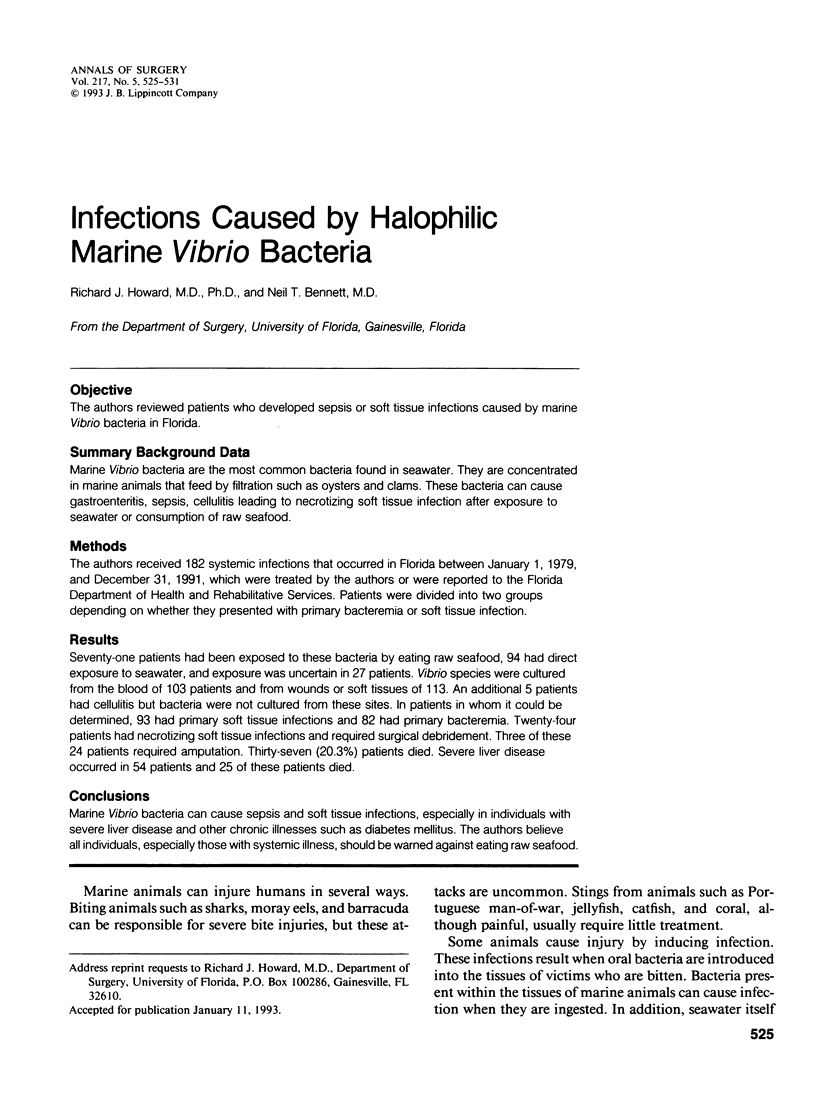
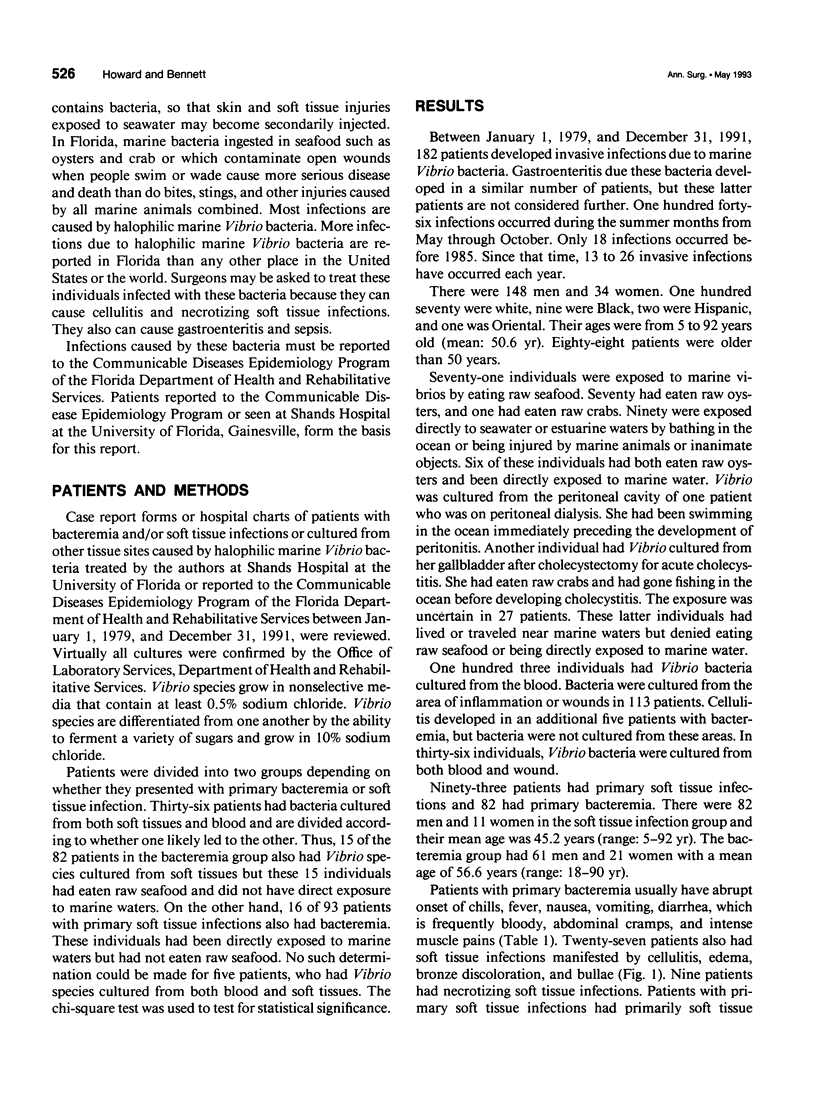
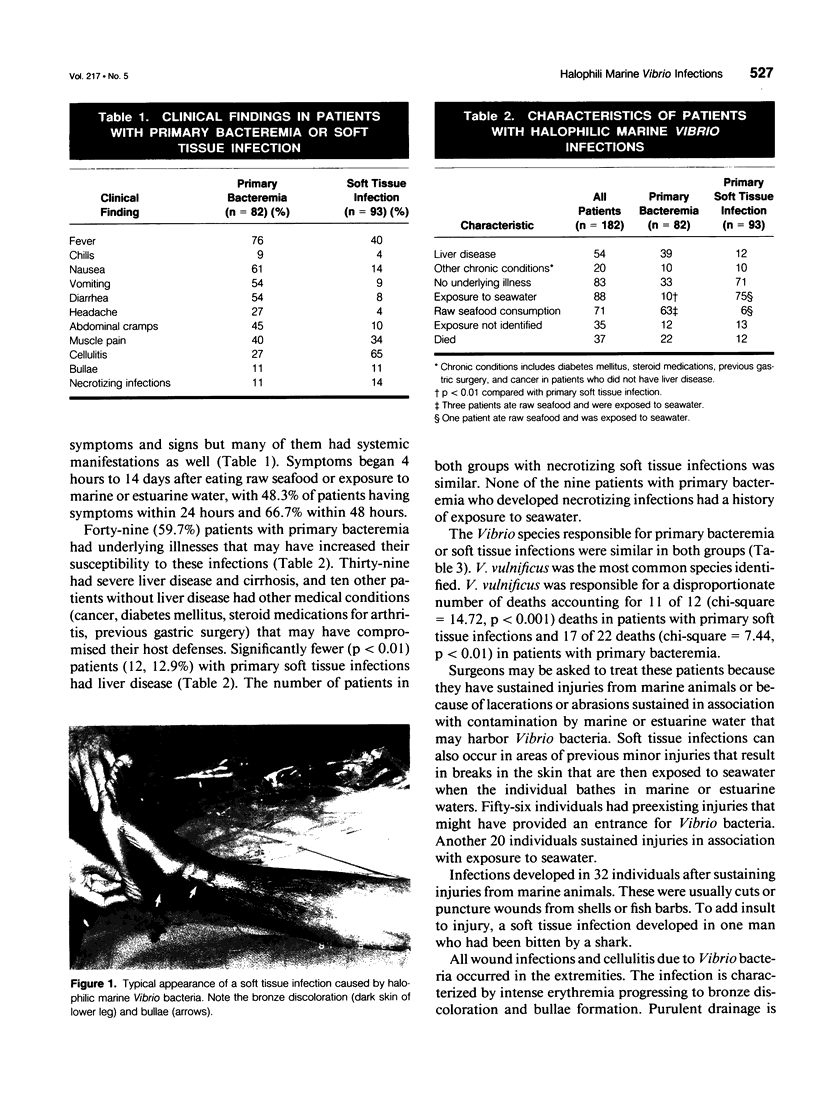

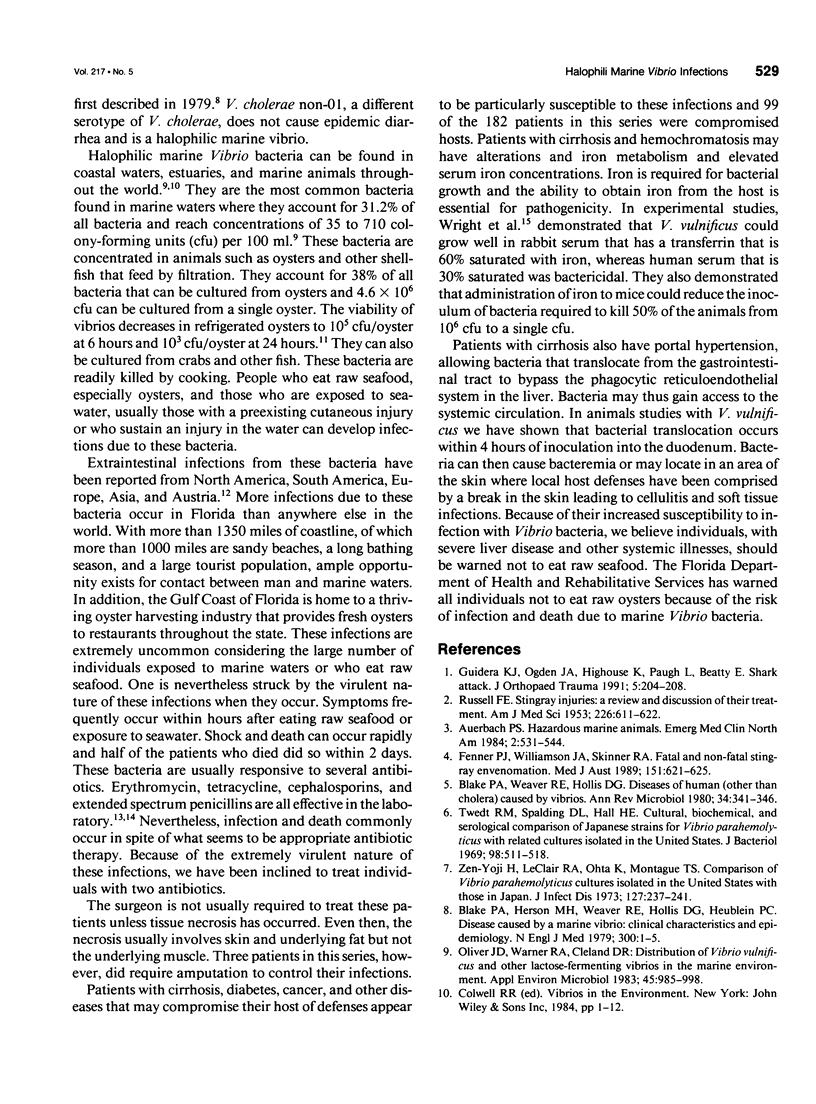
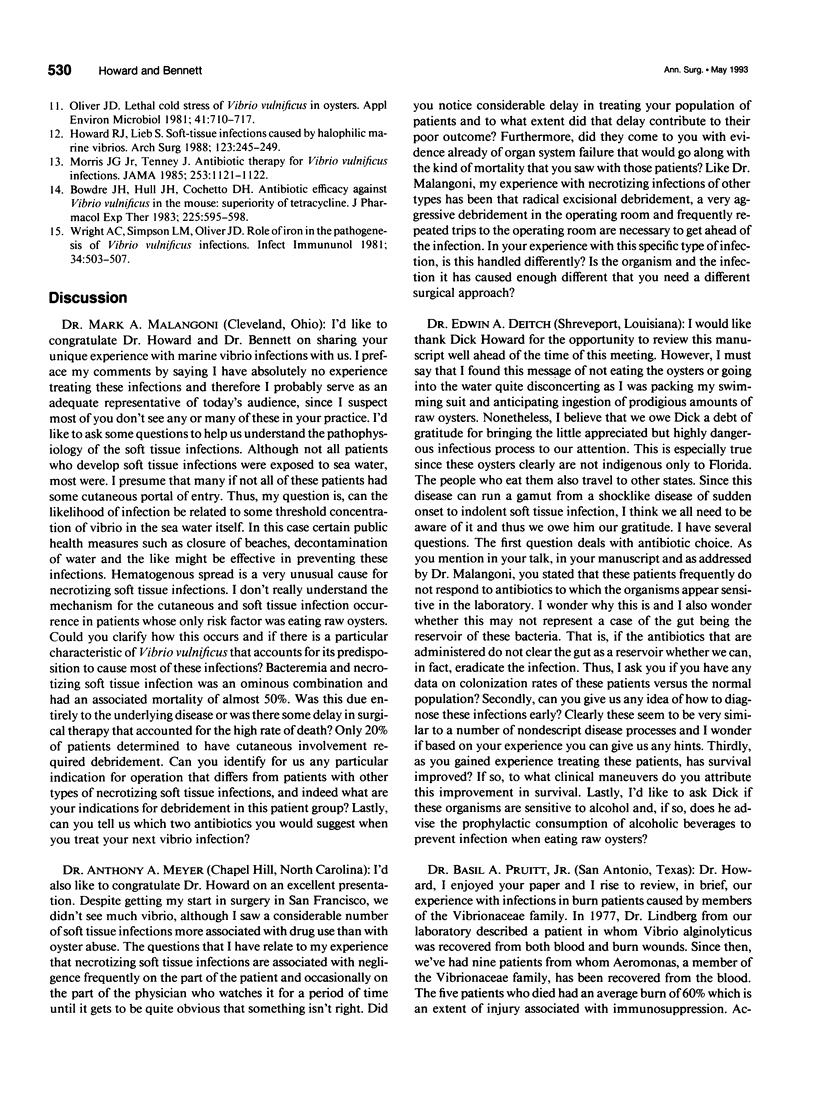
Images in this article
Selected References
These references are in PubMed. This may not be the complete list of references from this article.
- Auerbach P. S. Hazardous marine animals. Emerg Med Clin North Am. 1984 Aug;2(3):531–544. [PubMed] [Google Scholar]
- Blake P. A., Merson M. H., Weaver R. E., Hollis D. G., Heublein P. C. Disease caused by a marine Vibrio. Clinical characteristics and epidemiology. N Engl J Med. 1979 Jan 4;300(1):1–5. doi: 10.1056/NEJM197901043000101. [DOI] [PubMed] [Google Scholar]
- Blake P. A., Weaver R. E., Hollis D. G. Diseases of humans (other than cholera) caused by vibrios. Annu Rev Microbiol. 1980;34:341–367. doi: 10.1146/annurev.mi.34.100180.002013. [DOI] [PubMed] [Google Scholar]
- Bowdre J. H., Hull J. H., Cocchetto D. M. Antibiotic efficacy against Vibrio vulnificus in the mouse: superiority of tetracycline. J Pharmacol Exp Ther. 1983 Jun;225(3):595–598. [PubMed] [Google Scholar]
- Fenner P. J., Williamson J. A., Skinner R. A. Fatal and non-fatal stingray envenomation. Med J Aust. 1989 Dec 4;151(11-12):621–625. doi: 10.5694/j.1326-5377.1989.tb139631.x. [DOI] [PubMed] [Google Scholar]
- Guidera K. J., Ogden J. A., Highhouse K., Pugh L., Beatty E. Shark attack. J Orthop Trauma. 1991;5(2):204–208. doi: 10.1097/00005131-199105020-00015. [DOI] [PubMed] [Google Scholar]
- Howard R. J., Lieb S. Soft-tissue infections caused by halophilic marine vibrios. Arch Surg. 1988 Feb;123(2):245–249. doi: 10.1001/archsurg.1988.01400260133018. [DOI] [PubMed] [Google Scholar]
- Morris J. G., Jr, Tenney J. Antibiotic therapy for Vibrio vulnificus infection. JAMA. 1985 Feb 22;253(8):1121–1122. [PubMed] [Google Scholar]
- Oliver J. D. Lethal cold stress of Vibrio vulnificus in oysters. Appl Environ Microbiol. 1981 Mar;41(3):710–717. doi: 10.1128/aem.41.3.710-717.1981. [DOI] [PMC free article] [PubMed] [Google Scholar]
- Oliver J. D., Warner R. A., Cleland D. R. Distribution of Vibrio vulnificus and other lactose-fermenting vibrios in the marine environment. Appl Environ Microbiol. 1983 Mar;45(3):985–998. doi: 10.1128/aem.45.3.985-998.1983. [DOI] [PMC free article] [PubMed] [Google Scholar]
- RUSSELL F. E. Stingray injuries: a review and discussion of their treatment. Am J Med Sci. 1953 Dec;226(6):611–622. doi: 10.1097/00000441-195312000-00003. [DOI] [PubMed] [Google Scholar]
- Twedt R. M., Spaulding P. L., Hall H. E. Morphological, cultural, biochemical, and serological comparison of Japanese strains of Vibrio parahemolyticus with related cultures isolated in the United States. J Bacteriol. 1969 May;98(2):511–518. doi: 10.1128/jb.98.2.511-518.1969. [DOI] [PMC free article] [PubMed] [Google Scholar]
- Wright A. C., Simpson L. M., Oliver J. D. Role of iron in the pathogenesis of Vibrio vulnificus infections. Infect Immun. 1981 Nov;34(2):503–507. doi: 10.1128/iai.34.2.503-507.1981. [DOI] [PMC free article] [PubMed] [Google Scholar]
- Zen-Yoji H., Le Clair R. A., Ota K., Montague T. S. Comparison of Vibrio parahaemolyticus cultures isolated in the United States with those isolated in Japan. J Infect Dis. 1973 Mar;127(3):237–241. doi: 10.1093/infdis/127.3.237. [DOI] [PubMed] [Google Scholar]



